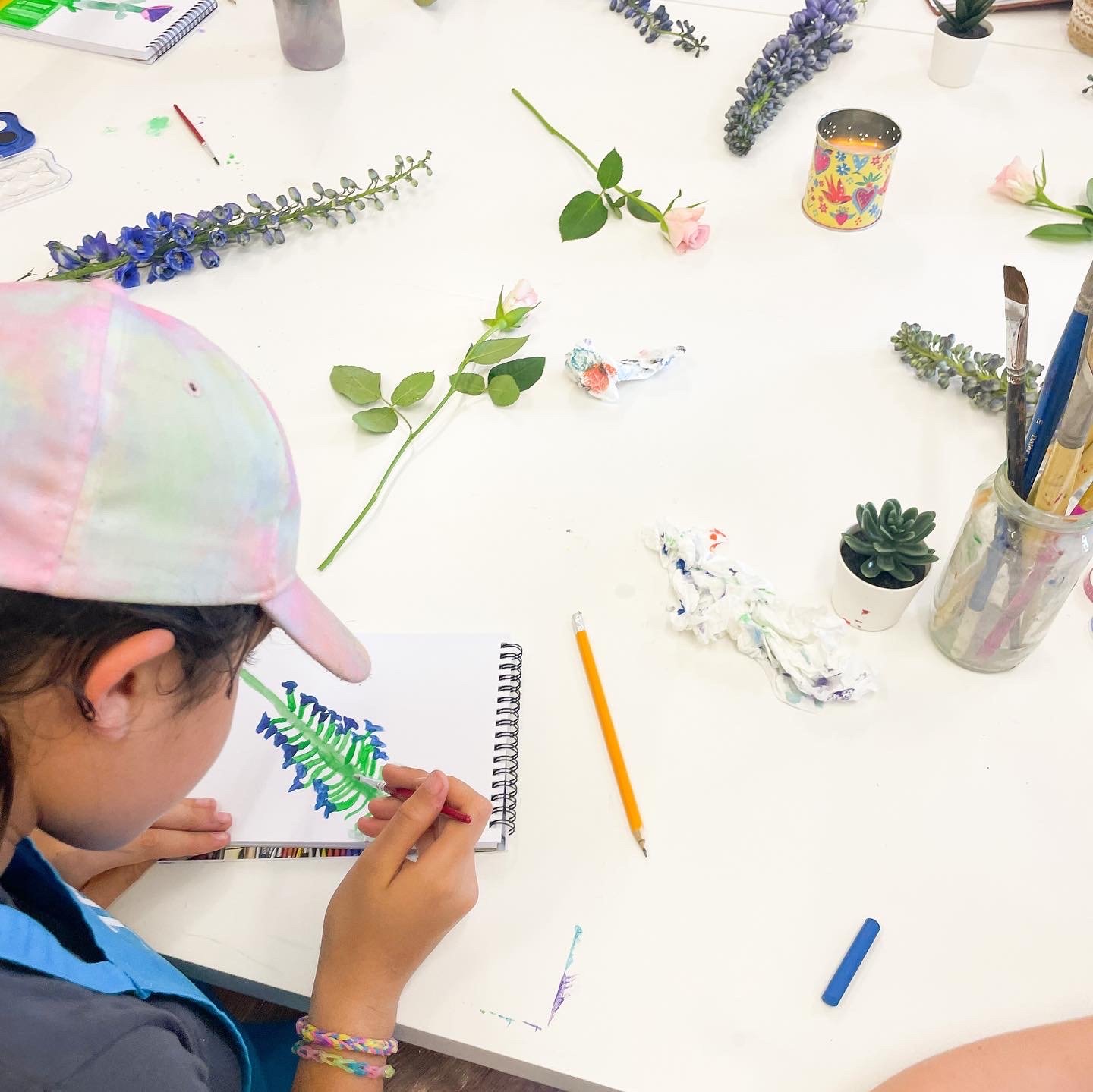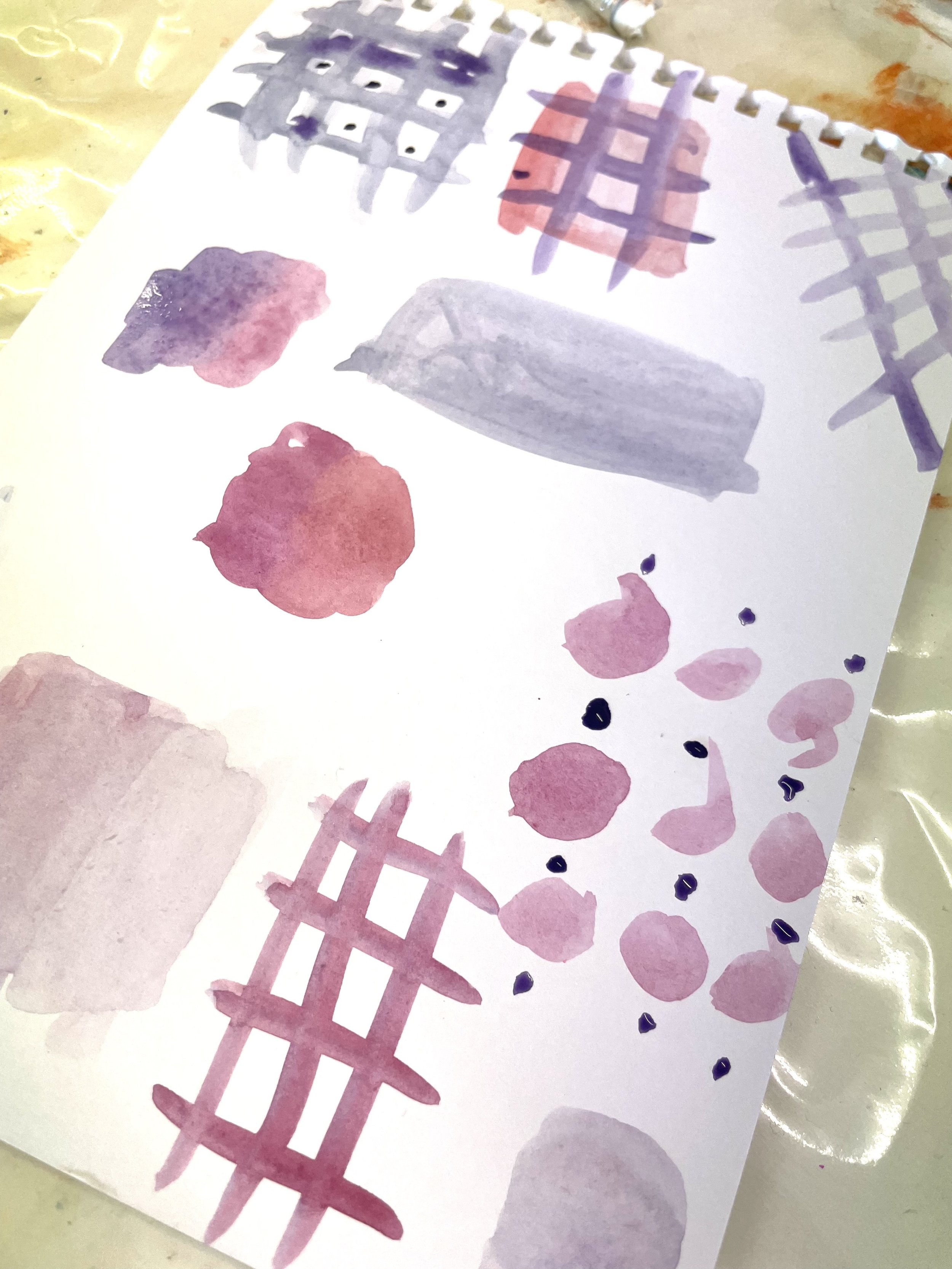5 WATERCOLOUR ACTIVITIES FOR 7-12 YEAR OLDS
Having recently taught a 4-week watercolour course for 7-12 year olds, lots of the activities were a big hit with the kids and very easy to replicate at home. All you need is a set of watercolour paints (you can pick these up for a couple of quid at local supermarkets), a brush or two (most paint sets will come with one!), a pot of water, some kitchen roll or an old towel/flannel to clean brushes with and some paper.
Watercolour paper can be quite pricey but you can get sketch pads for mixed media use a lot cheaper in The Range and Hobbycraft, for example. Usual printer paper would be fine too but best results will be when using thicker paper so it doesn’t crinkle or rip.
Science Through Art
One of our first activities during the course was to draw a whole page of circles (using a cup or roll of tape to draw around). Investigate different ways to use the paints. This works best using just two or three colours from your paint palette.
You could try:
adding paint to dry paper
wetting the paper first before painting
blending two colours in a circle
blending three colours in circle
adding pastels before and/or after using the paint to see how they react
You should end up with a whole page of interestingly painted circles, leading to lots of discussion about how different materials (the water, paints, pastels etc.) have reacted with each other. We also had a great chat about planets and the sun; I think you can see why!
Still Life Painting
This involves even less setup than the previous activity and is perfect for all ages, even preschoolers. You just need something for them to be inspired by - whether that is wild flowers, a bowl of fruit or something else.
Check out this cute garden set up my children used for doing a spot of painting.
Abstract Collages
Inspired by Becki Clarke’s book, we painted lots of different patterns on paper, again using just a few colours.
You could then cut shapes from the patterns and arrange them on another piece of paper to make an abstract watercolour collage.
Colour Wheel
While colour theory could be a whole course in itself, we kept it simple by investigating how primary colours work together in a colour wheel. You could draw around a bowl to make a circular shape and paint a blob of blue, red and yellow, evenly spaced around the circle.
This is a great challenge for children - some found it MUCH harder than others. Some find it quite tricky to add just a teeny bit of each colour to blend it slowly! Once they’ve got the hang it, they will be absolutely amazed by how many different colours can be made from just the primary colours!
Free Painting
To be faced with a blank piece of paper can be quite daunting for many children (and adults!) so I would recommend doing some of the previous activities first, to give them some understanding of how watercolours work and confidence with using them.
However, once they have basic colour theory knowledge and have explored blending colours, you won’t believe what they can come up with. Look at this beautiful example of a whale (where you’ll see a perfect example of blending in action) and this mandela style art work. Just perfect.
Love the idea of these but would like more guidance with watercolour painting? Our online watercolour painting course is available online now.






